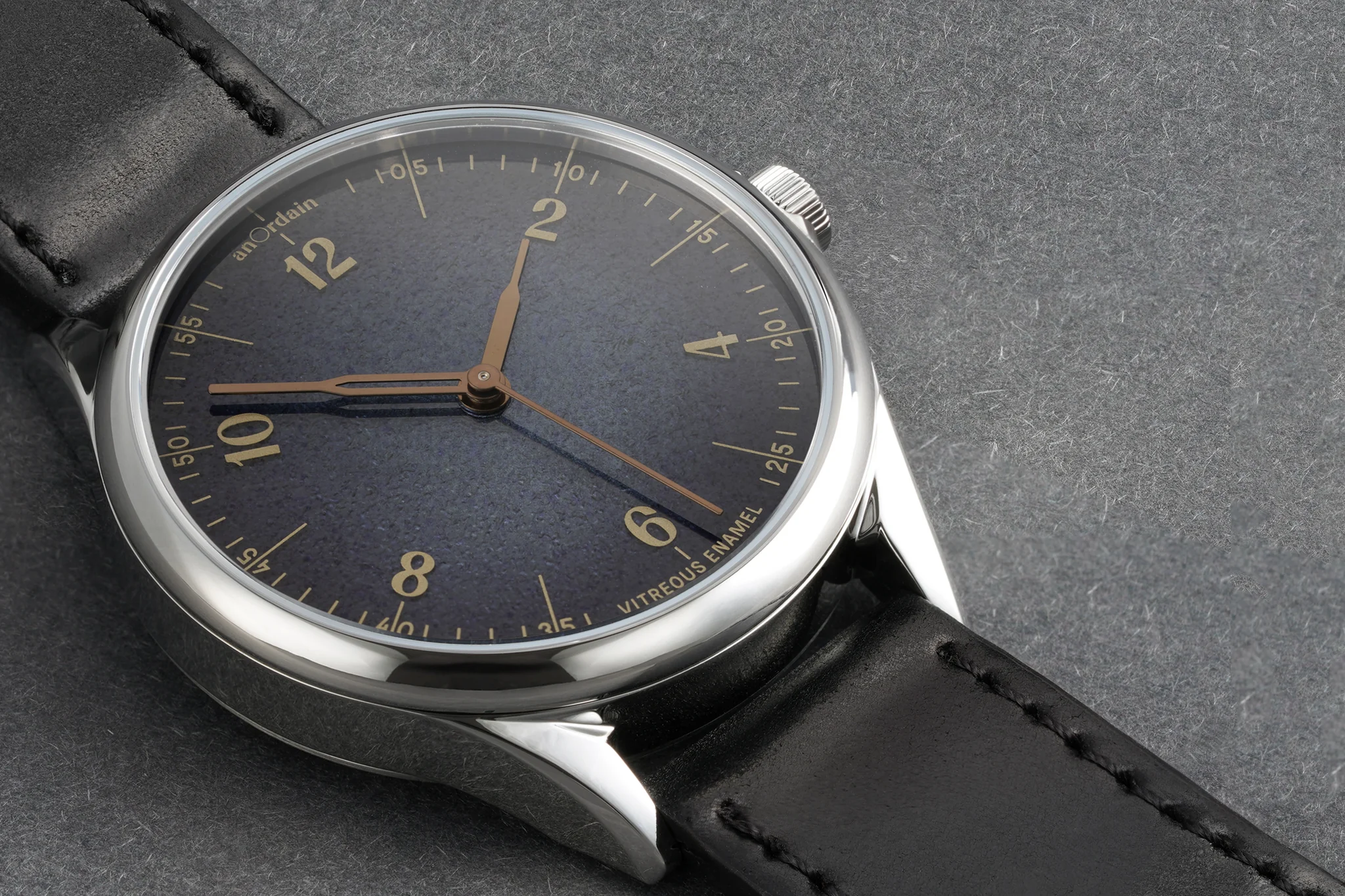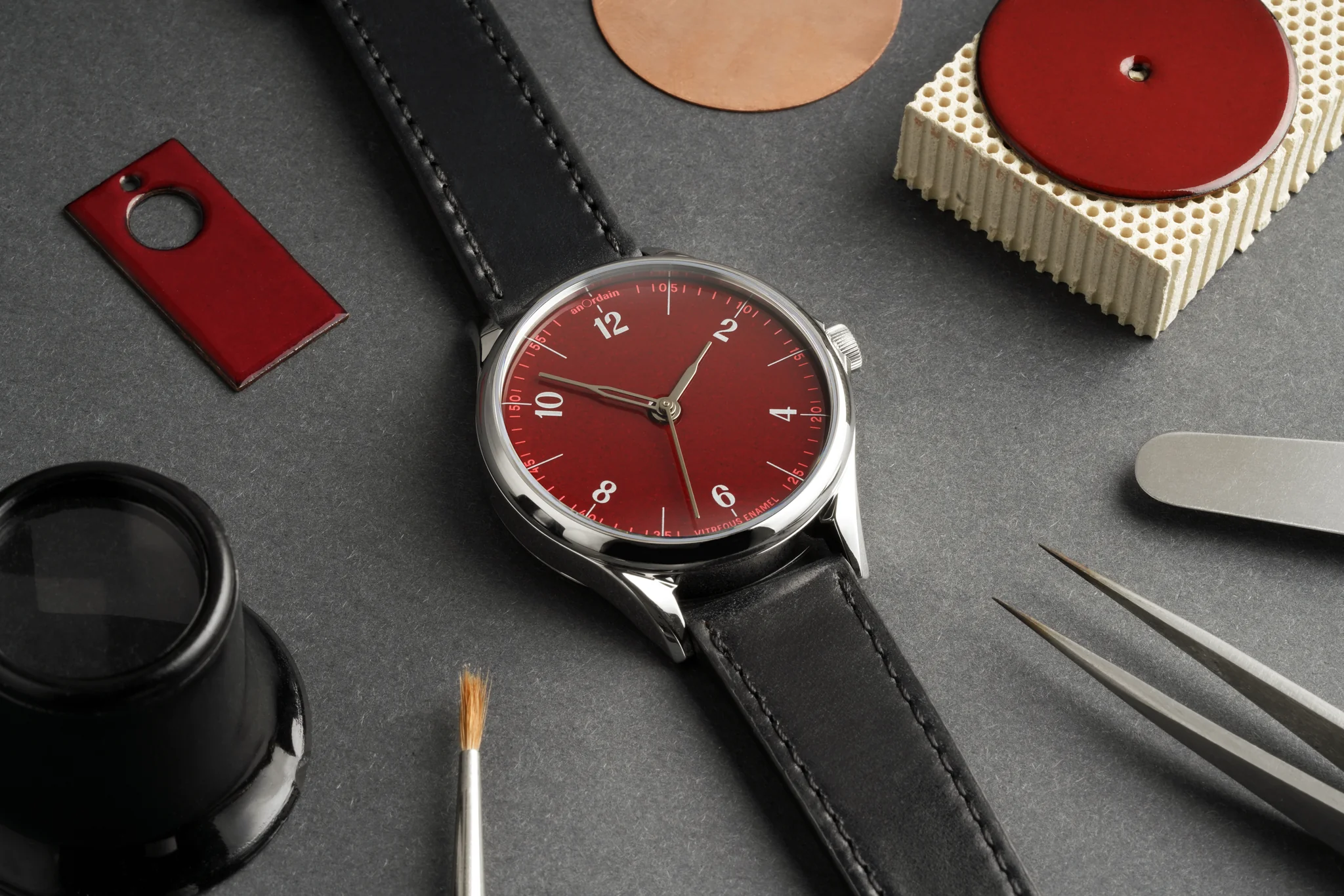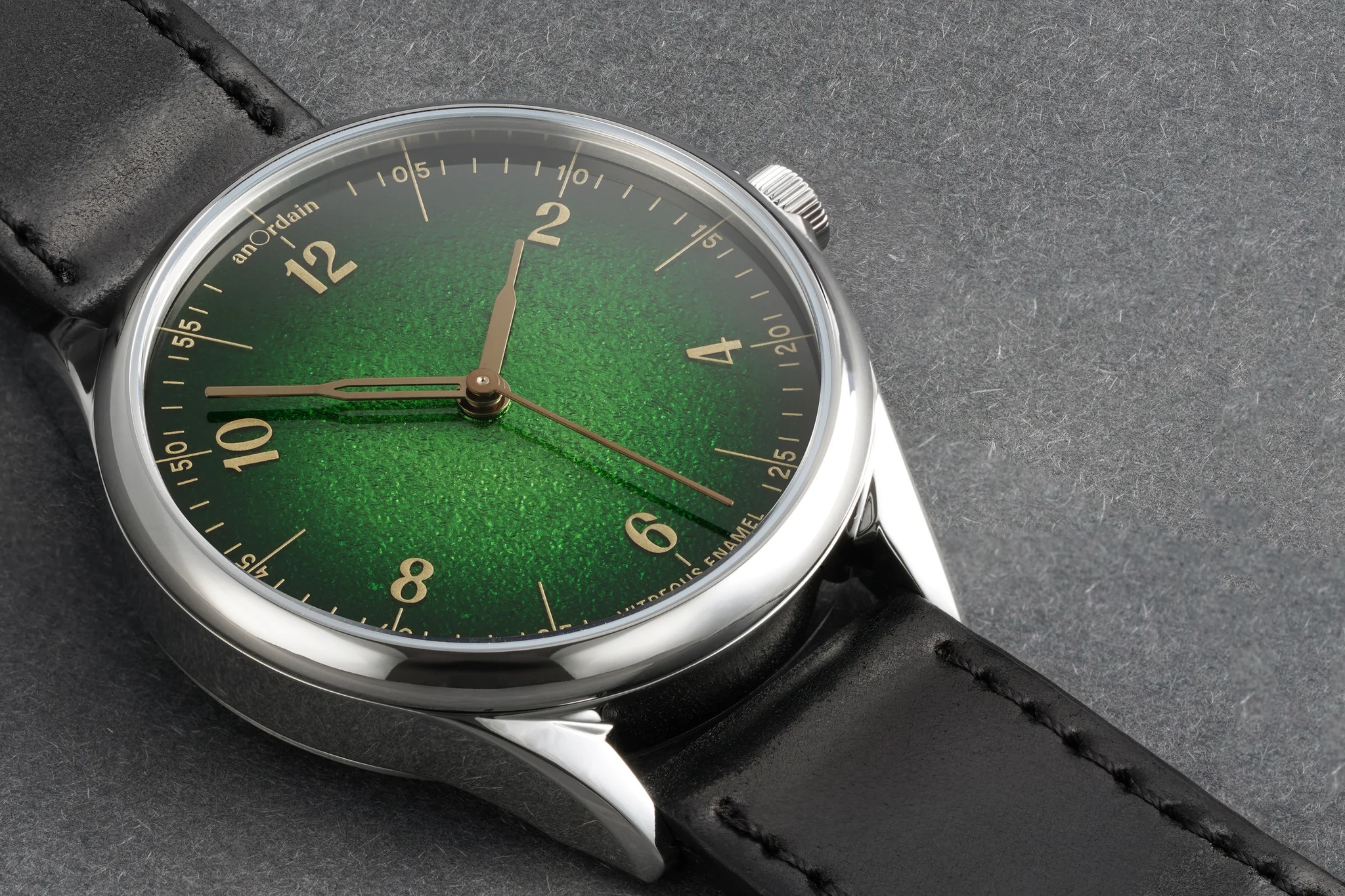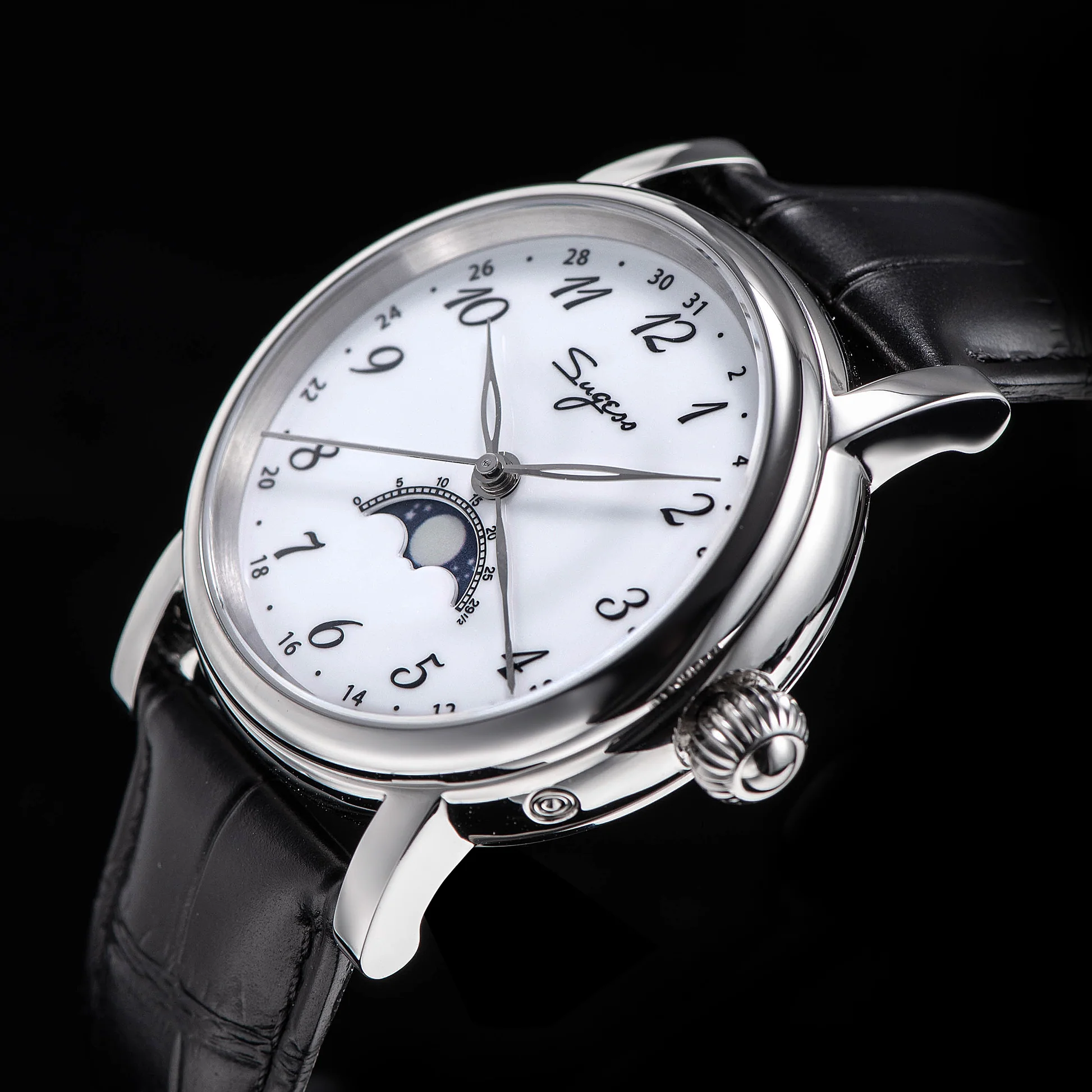Watch wants | Why I've been researching Enamel dial watches.
- Alvin
- Oct 20, 2024
- 8 min read
Why? I'll tell you why. It's because they're so pretty, shiny and beautifully delicate, that's why! The first enamel dial watch I had was a Chinese tourbillon, in fact it was so delicate that the mechanical whirlwind didn't work properly, but hot damn did it look good. I didn't buy it because of the dial but I would buy it again in part because of that dial. An enamel dial with a tourbillon nestled within is masterful flex - precision horology x arty craftsmanship. You'll see a few examples throughout this post.
The journey of enamel dials from ancient beginnings to modern iterations in watches from China to Switzerland weaves a fascinating narrative that intertwines innovation, craftsmanship, and timeless aesthetics.

This isn't the actual one, it's the newer model and it's even nicer than the initial, why not add a crown cabochon!
THE ORIGINS OF ENAMEL DIAL WATCHES
Enamel work can be traced back thousands of years to the Mediterranean and Byzantine cultures, where it was used to decorate jewelry and religious artifacts. In horology, enamel dials first appeared in the late 17th century when watchmakers began exploring ways to produce durable, legible, and visually appealing watch faces. These early enamel dials were prized for their glossy surfaces and resistance to discoloration.
The technique involves firing a thin layer of powdered glass, known as enamel, onto a metal surface. Once heated in a kiln, the glass fuses to the metal, creating a smooth, shiny finish. Over time, this process became more sophisticated, allowing for detailed designs and intricate decorations. Enamel dials were particularly favored by luxury watchmakers for their aesthetic appeal and ability to maintain their brilliance over centuries.
These days the process is used rarely and demands a premium due to the laborious process. There are numerous brands that have used and currently use enamel, I'll touch on some and take a closer look at others including; Sugess, Anordain, Celadon Haute Horology and Seiko.
THE ENAMELLING PROCESS
The creation of an enamel dial is a labor-intensive and delicate process. It starts with a metal base, often made of copper or gold, which is coated with layers of powdered enamel. The dial is then fired at temperatures exceeding 800°C (1,470°F), causing the enamel to fuse to the metal.
This firing process must be repeated multiple times to ensure an even, consistent layer of enamel. Each firing presents risks, as the enamel can crack, warp, or discolor if not done precisely. Depending on the desired design, watchmakers may use different enameling techniques, such as grand feu (great fire), champlevé, or **cloisonné:
*Grand Feu: One of the oldest and most traditional methods, where layers of enamel are built up and fired at high temperatures to achieve a smooth, flawless finish.
*Champlevé: Metal grooves are carved into the dial, and these cavities are filled with enamel before firing.
*Cloisonné: Fine wires are placed on the dial to create compartments, or "cloisons," that are then filled with enamel.
The result is a dial with unparalleled clarity, shine, and durability. Despite advances in dial production, enameling remains a highly skilled art form, requiring patience and mastery.
ICONIC ENAMEL DIAL WATCHES
Several iconic watches have elevated enamel dials to legendary status, becoming prized possessions for collectors and enthusiasts alike. A few examples include:
*Patek Philippe Ref. 2526: Launched in 1953, this Patek Philippe model was one of the first to feature an enamel dial paired with an automatic movement. Its smooth, creamy enamel dial exuded timeless elegance and is still revered by collectors today. Hodinkee did a piece on this simple masterpiece in 2016, I wish I'd seen that and bought one, as they state circa $10,000 as the price, there is one in the UK, yours for a meagre £75,000 on Chrono24.

*Jaeger-LeCoultre Master Grand Tourbillon Enamel - Continents: These exquisite timepieces released in 2009 show JLCs absolute mastery, there are different textures for land and sea - the cloisonné technique in effect and even a heatmap because why not. The collection features a hand-painted enamel dial with an elaborate tourbillon complication, again showcasing the blend of fine art and high watchmaking. You won't likely find any of these for sale, but in 2015 auction site Antiquorum sold one for EUR88,000, I can only imagine what they'd fetch now.

*Breguet Classique Collection: Known for its traditional craftsmanship, Breguet uses grand feu enamel in many of its watches. The clean, crisp design of their Classique models, paired with blued steel hands, exemplifies the elegance of enamel dials. Simply perfection, this 7147BB/29/9WU is around the £10k mark, maybe the perfect dress watch for those in the know. I love the small seconds identation that subtly screams 'enamel', and I do love the history but Breguet seem to be a left behind a touch these days.
*Vacheron Constantin Metier d'Arts Grand Sphinx de Tanis: One of the oldest continuously operating watchmakers in the world, Vacheron Constantin has produced numerous models with enamel dials over the years, including the Métiers d'Art collection, which showcases enamel work combined with artistic designs. This one shows the Champlevé style and is the "Grand Sphinx de Tanis – a 1.82-metre-tall statue from the Ancient Egyptian empire dating from 2035 to 1680 BC. It is one of the largest sphinxes preserved outside of Egypt" - (katerinaperez.com). FYI it is in Paris, in the Louvre.
These iconic and amazing enamel dials show the range of the enamel dial, from insane detail to perfect simplicity. It is tricky to work with and that makes the successes all the more rewrding, beautiful and expensive. Let's take a look at some brands that are enamoured with enamel.
SEIKO
Seiko, the Japanese watchmaking giant, has it's fingers in all the pies and has made a significant mark in the world of enamel dial watches, offering timepieces that combine traditional enameling techniques with modern precision. Seiko's enamel dial watches are known for their affordability compared to their Swiss counterparts. As only they can do, Seiko have been instrumental in democratizing enamel dials, making them more accessible to a broader audience while maintaining a high level of craftsmanship.
One of the most notable figures behind Seiko's enamel dials is 'Mitsuru Yokosawa', a master artisan who has been responsible for producing Seiko's enamel dials for years. He runs you through the process here and here. Seiko's enamel dial watches are produced through the grand feu technique, ensuring the same level of quality that has been cherished for centuries.
The Seiko Boutique UK site shows 15 results for enamel watches. They have collection enough to allow a critique of what works and what doesn't.
Here are two beauties, though they aren't without there issues. On the left the SPB401J1 Presage ‘Laurel’ – Limited Edition 110th Seiko Wristwatchmaking Anniversary (£1200 rrp), and on the right the SPB393J1 The Presage ‘Laurel Enamel’ (£1400 rrp). These two have some kooky features, like the date subdial. They are enamel dial beauties and it adds to the charm but the baby 31 on the retrograde date might be a step too far.
WHAT WORKS | WHAT DOESN'T |
Roman/Arabic numerals | Partial numerals |
Indentations/impressions | Date windows |
Smaller numerals | Poor photography |
Red 12 | Black enamel |
Hour markers (lines) |
Look at these two photos of the same watch, below, the SPB091J1 Presage Enamel, both from the Seiko website. From the first you couldn't tell that it was an enamel dial, the second shows that enamel sheen, indents, roman numerals following the indents, even if it has that slightly off date subdial at 6 o'clock and cut off numerals, it's still a stunner. They look like different watches, light matters, photography matters.
My opinion is that the classic nature of the material works well with other classic elements, like the numerals, it's an odd idea but for me it works. The printing of line hour markers maybe leaves the dial a bit flat, applied markers work (see the Patek 2526). The only exception is when the dial is super fancy, then you can do without markers and that brings us the next brand.
ANORDAIN
Old crafts, new hands - that's their line and it says it all. Anordain came flame-blasting onto the scene out of Glasgow, Scotland in 2015. They have been trying to keep up with demand ever since. Their Fume model 1 line is the stand out, and I guess their flagship piece. The prices are reasonable but the waiting list is not, testament to the brand loyalty and quality - and limited supply I guess - there is a long wait. And there are very few pieces for sale on Chrono24, just 15. Their medium sized Model 1 at 38mm is a winner, at circa £2500 but you'll have to pay a mark up of £1000 or so even for pre-owned. Their website shows their process and the artists/engineers involved in that process. It's a good place to get an idea of what enamel is all about, and hot damn are they pretty.
Imgs: Anordain.com
SUGESS
As you may know Sugess is an emerging Chinese brand that has gained attention for producing affordable mechanical watches, often inspired by traditional Swiss designs and often championed by me. I have 4 in the collection I think, but not an enamel dial (that damn tourbillon) which Sugess incorporates into some of its offerings, appealing to those who appreciate the artistry of enamel at a more accessible price point.

While Sugess is an up and comer with a good selection of enamel dials, it doesn't have the same pedigree in the collection as Seiko's enamel dials orSwiss brands, but it's got a few gooduns offering a nod to traditional craftsmanship while being priced for budget-conscious enthusiasts. There are a few options, the best are tourbillons but you can get an enamel dial for circa £200 which is very very welcome. When you think of the total package, mechanical watch with an enamel dial and chronograph (hand wind mechanical) or pointer date (automatic), it is quite frankly a miracle of the modern world.
CELADON HH
Now for something special, I have a Maison Celadon watch and the dial is not enamel but it is stunning, the Imperial Plum. But it's actually rubbish and not stunning at all when compared to the Haute Horology collection from Celadon. Owner Benjamin Chee has been avid collecter and enthusiast, and is now owner of a number of the best new brands out of Singapore. They are showing that there are levels to this game, and it won't cost you a house.
Celadon Haute Horology have been producing some pure horological art in the form of Cloisonne enamelling, created by Grandmaster Xiong Songtao, third generation heir to the family of enamel artisans of the Chinese imperial court. They are quite frankly some of the most beautiful dials on earth, and at a fair bit less than some of the new JLC $250,000 offerings. For Sky-Dweller money, the simpler movement CH1 comes in at $14,900, that's a work of art. That is something.
ROLEX
What, Rolex, Why? These bastards are everywhere, can't do a post without them. Why are they here? Obviously, it's hard to miss that shiny sonnuvabitch below. The Rolex Day-date 36, aka, the Emoji. Now here's the test, which type of enamelling is this? Yes, well done, it is Champleve, metal inserted and enamel poured in. Despite the nonsense of the watch, the split opinions, and hurt feelings, this is Rolex doing high horology and they did it well.
CONCLUSION
There are hits and misses for me when it comes to enamel dials. If you can't tell it's enamel then this is a miss, though I understand the idea of understatement and subtlety, this is a medium that should be noted and notable. The work and craft it holds needs to be known, I think it does anyway. It doesn' t have to be to the level of Celadon HH's 'in your face-ness' but I think it should be evident.
The evolution of enamel dial watches reflects the intersection of art, tradition, and horological precision. From its roots to the present day, enamel dials have captivated watch enthusiasts, collectors, and me too. Brands like Seiko and Sugess have introduced enamel dials to a wider audience, while Swiss watchmakers continue to push the boundaries of this historic craft with even Rolex getting involved.
I absolutely love the enamel dial, as mark of craft and artistry, as a symbol of technical prowess and as just for aesthetic variation in a collection. It has no limit in terms of art, as Celadon HH and JLC are keen to show.
Whether it’s a limited edition Swiss masterpiece or an affordable yet elegant Sugess, enamel dial watches remain a symbol of timeless beauty and skilled craftsmanship that transcends generations.
Your Enamouringly,
Alvin
Sugess Enamel
Selection - https://sugesswatch.com/search?page=2&q=enamel
Seiko Enamel
Patek 2526
JLC Continents
Celadon HH




































